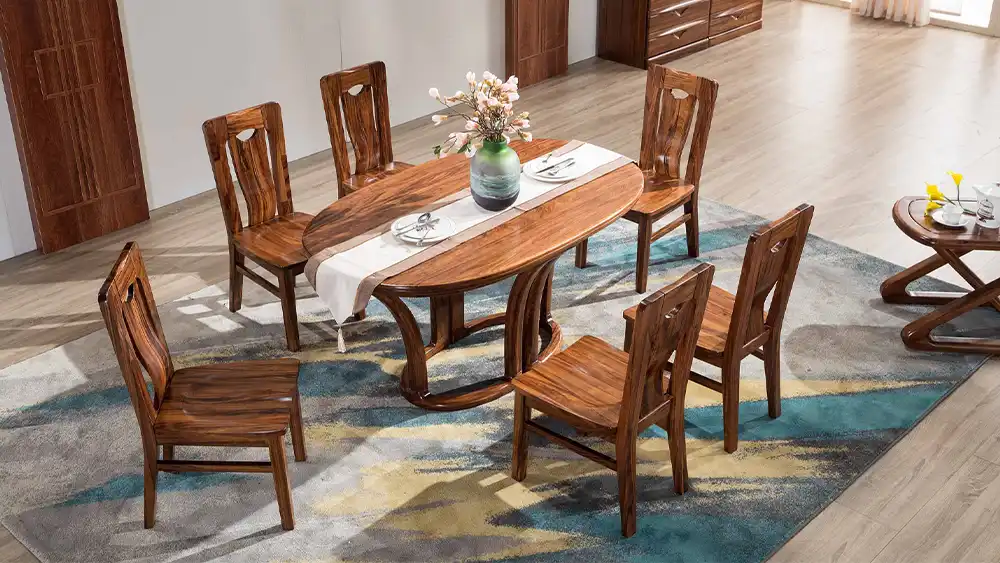Why Furniture Is the Backbone of Interior Design

Furniture is more than just functional—it’s the cornerstone of interior design. From defining a room’s purpose to setting the tone for its style, the right furniture choices create a foundation for cohesive and aesthetically pleasing spaces. Whether you’re designing a cozy living room, a modern office, or a serene bedroom, furniture plays an essential role in achieving harmony between functionality and visual appeal.
Maximize Space and Style with the Right Furniture Choices
Here’s why furniture is considered the backbone of interior design and how it transforms spaces.
1. Establishing the Room’s Function
One of the primary roles of furniture in interior design is defining the function of a space. Without furniture, a room is simply an empty shell. By selecting specific pieces, such as a dining table for meals or a desk for work, you assign a clear purpose to the area. Each piece contributes to how the space is used and experienced, making furniture integral to creating functional environments.
For multi-purpose spaces, furniture helps delineate zones for different activities. A sectional sofa can define a living area in an open floor plan, while a strategically placed bookshelf can separate a workspace from a relaxation zone. The versatility of furniture ensures that spaces are both practical and adaptable to various needs.
2. Creating Visual Balance and Harmony
Furniture selection and placement significantly impact the visual balance of a room. The size, shape, and arrangement of furniture pieces should complement the proportions of the space. Overcrowding a small room with oversized furniture can make it feel cramped, while placing too few pieces in a large space may leave it feeling empty and uninviting.
Choosing furniture that aligns with the room’s dimensions and layout creates a sense of harmony. For example, a minimalist table paired with sleek chairs can make a small dining area feel open and airy. On the other hand, a spacious living room might benefit from larger, statement pieces that fill the area without overwhelming it.
3. Reflecting Personal Style and Aesthetics
Furniture is one of the most effective ways to express personal style and taste in interior design. The materials, colors, and designs of furniture pieces convey the overall aesthetic of the space, whether it’s contemporary, traditional, rustic, or eclectic.
From clean lines and neutral tones to bold patterns and vibrant hues, furniture helps shape the visual identity of a room. For inspiration and a wide variety of options, exploring resources like this website can guide you toward finding furniture that aligns with your design vision. Incorporating signature pieces, such as a vintage armchair or a modern coffee table, adds character and uniqueness to the space.
4. Enhancing Comfort and Usability

While aesthetics are important, furniture’s primary purpose is to provide comfort and usability. Ergonomically designed chairs, supportive sofas, and well-constructed tables enhance daily living by making spaces more comfortable and practical. For example, a well-padded armchair invites relaxation, while an adjustable desk promotes productivity in a home office.
Comfortable furniture also encourages social interaction and engagement. A thoughtfully arranged seating area with plush cushions and armrests creates an inviting environment for conversation and connection. Prioritizing comfort ensures that the space not only looks beautiful but also feels welcoming and functional.
5. Supporting Cohesion in Interior Design Themes
A cohesive interior design relies on furniture to tie together various elements of a room, including color schemes, textures, and decorative accents. The materials and finishes of furniture can serve as a unifying factor, ensuring that every element contributes to a seamless aesthetic. For instance, incorporating wood furniture into a room with natural accents like plants and earth-toned rugs reinforces a biophilic design theme.
Furniture also provides a base for layering design details, such as throw pillows, rugs, and artwork. By selecting furniture that complements these accessories, you create a unified look that enhances the overall impact of the space.
6. Maximizing Space Efficiency
In smaller spaces, furniture design and arrangement are critical for optimizing usability. Multi-functional pieces, such as sofa beds, storage ottomans, and foldable tables, help maximize the available square footage without sacrificing style. Modular furniture provides flexibility, allowing you to adapt the layout based on changing needs.
Strategic placement of furniture can also improve the flow of a room. Ensuring that pathways are clear and arranging seating areas to encourage interaction contributes to a well-organized and efficient space. This attention to detail makes even the most compact spaces feel spacious and comfortable.
7. Adapting to Trends and Timelessness

Furniture serves as a bridge between current trends and timeless design principles. While it’s tempting to incorporate trendy pieces, selecting furniture with classic shapes and high-quality materials ensures longevity. Neutral-colored sofas or hardwood tables, for example, remain relevant as design trends evolve.
To keep the space fresh and modern, incorporate smaller, easily replaceable items like throw pillows or side tables that reflect the latest styles. This balance allows you to create a dynamic space that evolves with your tastes without requiring frequent overhauls.
Final Words
Furniture is much more than a practical necessity—it’s the backbone of interior design, shaping how we experience and interact with spaces. From defining a room’s purpose to enhancing its style, comfort, and functionality, furniture plays a pivotal role in transforming houses into homes. By carefully selecting pieces that reflect your personality, meet your needs, and align with your aesthetic, you can create spaces that are as inviting as they are functional. With the right approach, furniture becomes the foundation of a well-designed, harmonious interior.

news via inbox
Sign up and never miss out on the latest news and updates at HighStuff




